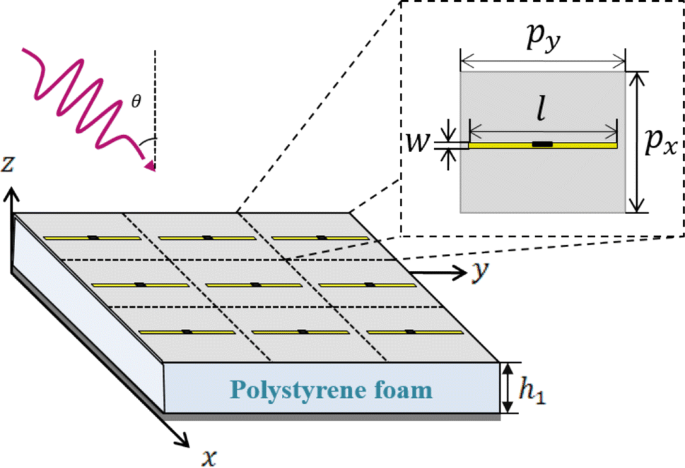Mansoureh Mohammadi, Hamid Rajabalipanah, Ali Abdolali,

https://www.nature.com/articles/s41598-020-67399-3
In this paper, a theoretical framework relying on the reciprocity theorem is proposed to accurately design a spectrally-selective THz superstrate-loaded metamaterial absorber (SLMA) exhibiting wide-angle feature. By leveraging high-order Floquet harmonics in a generalized transmission line model characterizing the conventional metamaterial absorbers (MAs), it is demonstrated that MAs suffer from impedance mismatch, especially at near grazing angles. From an impedance matching viewpoint, this major challenge is tackled in this paper via two different designs, exploiting a magneto-electric anisotropic Huygens' metamaterial and a multilayer dielectric structure at a certain distance over the MA plane. The numerical results corroborate well the theoretical predictions, elucidating that the proposed SLMA significantly broadens the angular performance of the MA up to near grazing angles (about 80°), where high absorptivity is still achieved in both principal planes. The deteriorating effect of diffraction modes has been comprehensively analyzed. In comparison to the previous wide-angle MA reports based on intricate particle geometries and brute-force optimizations, the proposed design features a straightforward semi-analytical algorithm, which can also be re-developed for microwave, mid-infrared, and optical frequency bands and for any type of MA element. The proposed SLMA would be very promising for various wavelength-selective applications such as sensors and imaging.

No comments:
Post a Comment
Please share your thoughts. Leave a comment.